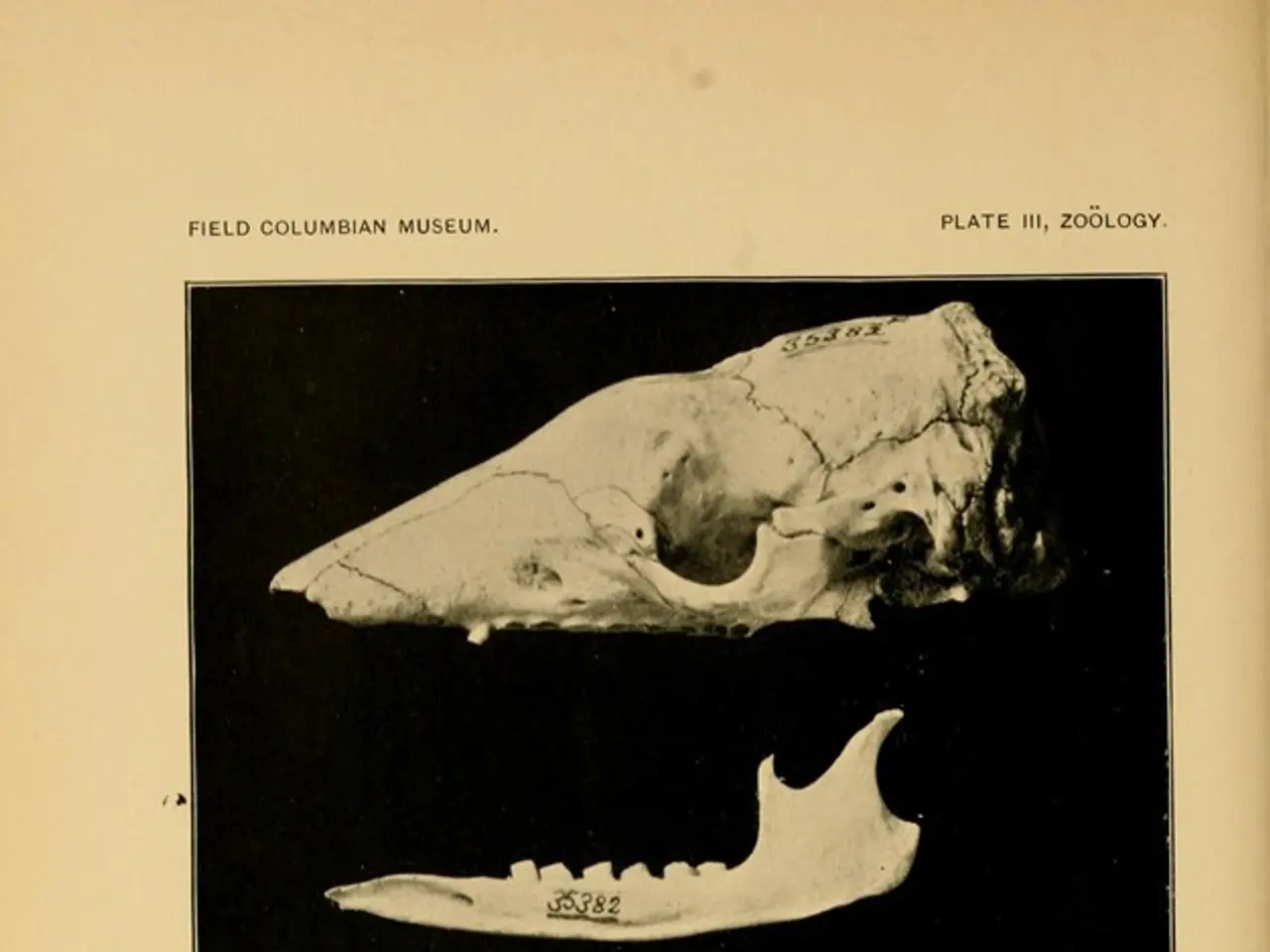Unique Functions of Broca's and Wernicke's Regions in the Brain
In the complex world of neurology, two key areas stand out as indicators of brain health and critical components of effective communication: Broca's and Wernicke's areas. Located in the left frontal and temporal lobes respectively, these regions play pivotal roles in language production and comprehension, aspects that are essential for social interaction and mental health.
Broca's area, situated near the lateral sulcus in the left frontal lobe, is primarily responsible for speech production and the motor planning of speech. It ensures that our words are grammatically correct and coherent. Damage to this area results in Broca’s aphasia, characterised by slow, effortful speech with relatively intact comprehension.
On the other hand, Wernicke's area, found in the left temporal lobe, is primarily involved in language comprehension. This region processes and comprehends spoken language, analysing words and contextualising them in terms of grammar and meaning. Damage to Wernicke’s area causes Wernicke’s aphasia, marked by fluent but nonsensical speech and difficulty understanding language.
The neurological pathway connecting these two areas is the arcuate fasciculus, a bundle of nerve fibers that facilitates communication between Wernicke's area (language comprehension) and Broca’s area (language production). This connection allows the brain to process heard or read language in Wernicke’s area and then send the information to Broca’s area to coordinate the detailed motor plan needed for speech production.
| Brain Area | Location | Primary Role | Deficit (Aphasia) | |------------------|----------------------|--------------------------------|-----------------------------| | Broca's Area | Left frontal lobe | Speech production, motor planning, grammar | Broca's aphasia: slow, effortful, non-fluent speech but good comprehension | | Wernicke's Area | Left temporal lobe | Language comprehension | Wernicke's aphasia: fluent but nonsensical speech, poor comprehension |
Individuals with Wernicke's aphasia may speak in long sentences with no meaning, add unnecessary words, and even create new words. They often have difficulty understanding speech and are usually unaware of their mistakes. Treatment for Wernicke's aphasia focuses on therapies to improve language comprehension and communication, with speech and language therapy and supportive communication strategies from family and caregivers playing a significant role in rehabilitation.
Numerous case studies and research findings have shed light on the dynamic interaction between Broca's and Wernicke's areas, reinforcing our understanding of the interconnected nature of brain regions and guiding therapeutic approaches for language impairments. As we age, our brain undergoes natural changes, and this includes alterations in Broca's and Wernicke's areas, which may contribute to the normal age-related decline in language abilities. Maintaining the health of these areas involves a combination of lifestyle choices and proactive strategies, such as mental stimulation, social interaction, healthy lifestyle, continuous learning, and professional monitoring.
Understanding how aging affects these areas is crucial for developing strategies to maintain language abilities and overall cognitive health in older adults. Beyond simple comprehension, Wernicke's area is involved in understanding the semantic aspects of language, helping in discerning the meaning of words and phrases. Diseases that affect the brain, such as stroke, Alzheimer's, and other forms of dementia, often impair these regions, leading to language deficits.
Wernicke's area works in conjunction with other parts of the brain, including Broca's area, for fluid language comprehension and production. Wernicke's area was discovered by Carl Wernicke, a German neurologist, in the late 19th century. The relationship between Broca's and Wernicke's areas is facilitated by a bundle of nerve fibers known as the arcuate fasciculus.
In conclusion, the functional specialisation of Broca's and Wernicke's areas highlights the mediated nature of language production and comprehension by distinct yet interconnected cortical areas. Damage to either of these areas produces characteristic types of aphasia, underscoring the importance of their proper functioning for effective communication.
- While essential for social interaction and mental health, the brain regions Broca's and Wernicke's areas are often affected by neurological disorders.
- The brain's Broca's area, responsible for speech production, ensures our words are coherent and grammatically correct.
- Understanding the neuroscience behind these areas helps in developing strategies for language impairments and maintaining cognitive health.
- Mental stimulation, social interaction, healthy lifestyle, continuous learning, and professional monitoring can help maintain the health of Broca's and Wernicke's areas.
- The interconnected nature of brain regions, as seen in Broca's and Wernicke's areas, is a key element in the field of psychology and mental health.
- Sleep plays a crucial role in neuroplasticity, aiding in the repair and strengthening of connections between neurons, like the arcuate fasciculus connecting Broca's and Wernicke's areas.
- Damage to Wernicke's area results in Wernicke’s aphasia, characterized by fluent but nonsensical speech and difficulty understanding language.
- Exercise is beneficial for overall brain health, as it promotes neuroplasticity and supports cognitive functions, including attention and focus.
- In health and wellness, cognitive activities like brain games can help stimulate neurons and improve cognitive functions, particularly in the areas of Broca's and Wernicke's.
- The medical-conditions that impact Broca’s and Wernicke's areas, such as stroke, Alzheimer's, and other forms of dementia, often lead to memory loss and language deficits.




